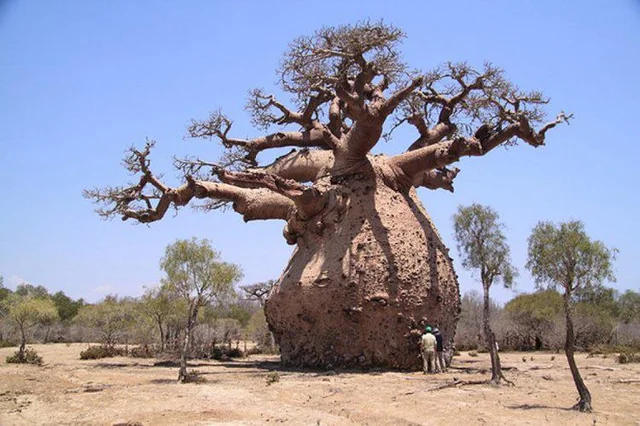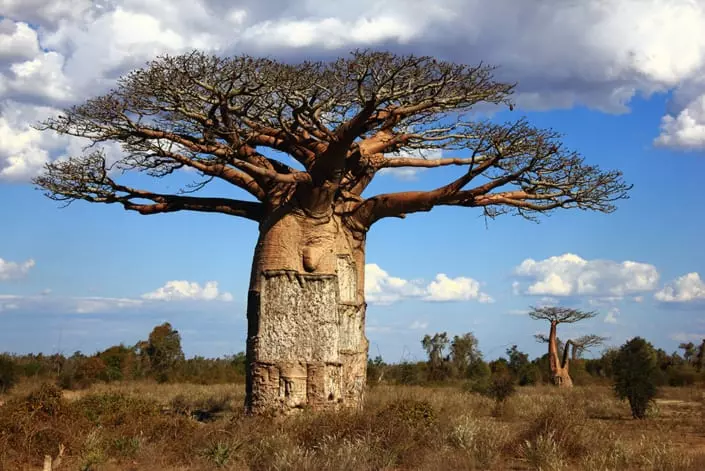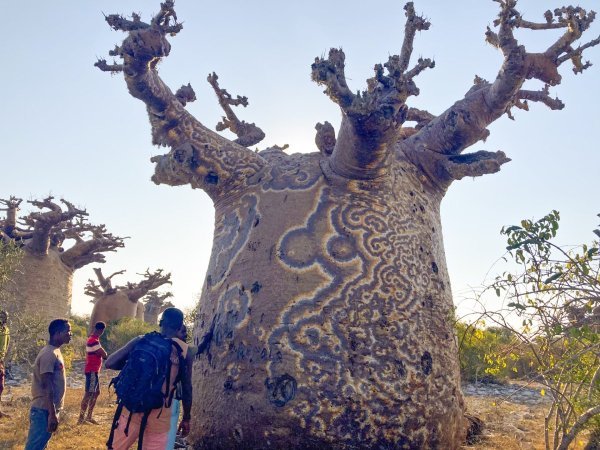The Baobab: The World’s Thickest Log and a Symbol of Life
The baobab, often referred to as the “Tree of Life,” is one of the most remarkable and awe-inspiring plants in the world. Known scientifically as Adansonia digitata, these majestic trees are a symbol of strength, resilience, and vitality in Africa. With their colossal size, incredible lifespan, and myriad uses, baobabs have captured the imagination of people for centuries. However, despite their magnificence, these iconic trees face the threat of extinction, making it more important than ever to appreciate and protect them.
The World’s Thickest Log
Baobabs are true giants in the plant kingdom. Their trunks can grow to an astonishing diameter of over 20 meters, making them the thickest trees on the planet. But it’s not just their size that makes them stand out. Baobabs can store up to 120,000 liters of water in their hollowed-out trunks, allowing them to survive in arid conditions. This remarkable ability to store water is crucial for surviving in the dry, hot regions of Africa where these trees are found.
In fact, some baobabs are so massive that they are used as shelters. Local communities have hollowed out sections of their trunks to create homes, animal enclosures, or storage sheds, making these trees an integral part of daily life in many African cultures.

A Living Legacy: Longevity and Ecology
Baobabs are not just large—they are ancient. It is estimated that these trees can live for up to two thousand years. Their age is often determined by their diameter, with the larger trees being hundreds or even thousands of years old. In fact, many baobabs have witnessed the changing of generations, standing tall as living monuments to Africa’s history.
Beyond their sheer size and age, baobabs play a vital role in their ecosystems. Their trunks, branches, and roots house a wide variety of animals, birds, and insects. The baobab provides shelter and food, fostering a diverse community of life within its vast structure. Its flowers, which bloom overnight, are huge—up to 20 cm long—and their nectar is a crucial food source for many species. Additionally, the fruits of the baobab are packed with nutrients and have been used by local tribes for centuries as a food source and medicine.

The Baobab’s Gifts to Humanity
The baobab is a tree of many uses. Indigenous communities, particularly in Madagascar, have long utilized the tree for a variety of purposes. The sap of the baobab is used to create oil, which is sought after for its skin-healing properties. This oil has gained popularity worldwide as a beauty product, due to its moisturizing and antioxidant-rich composition.
Additionally, the baobab’s bark is used to make rope, while its wood is strong enough to build canoes—long, slender boats that are essential for fishing and transportation in many coastal regions. The cork of the baobab is not just a material; it also contains medicinal compounds believed to help treat conditions like epilepsy.
A Symbol of Life, Abundance, and Healing
In African culture, the baobab is more than just a tree. It is a symbol of life, fertility, and healing. The tree’s ability to store water, provide shelter, and offer nourishment to both humans and wildlife has made it an enduring symbol of abundance. Its resilience in the face of harsh conditions makes it a powerful metaphor for perseverance and strength.
Sadly, despite its many uses and cultural significance, the baobab is facing threats from climate change, deforestation, and human encroachment. Some species of baobabs are now classified as endangered, with efforts underway to protect and preserve these ancient giants for future generations.
Conclusion
The baobab is truly a wonder of nature, a tree that embodies the power of life itself. From its massive trunk and ability to store water, to its cultural significance and ecological contributions, the baobab is a symbol of abundance, fertility, and healing. As we face growing environmental challenges, it is more important than ever to protect these incredible trees and ensure they continue to thrive for generations to come.
Whether you’re in Africa, Madagascar, or anywhere else in the world, the baobab reminds us of the incredible resilience of nature and the deep connections we share with the earth. Let’s cherish and protect this living wonder while we still can.
Ready to learn more about the mighty baobab? Join the effort to protect these magnificent trees and witness their wonders firsthand!
